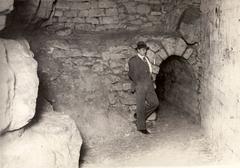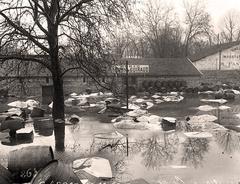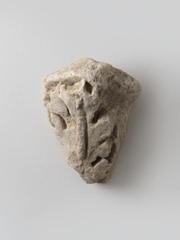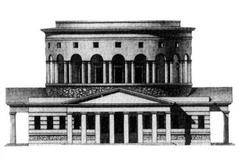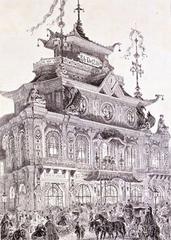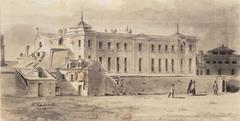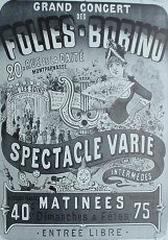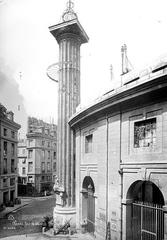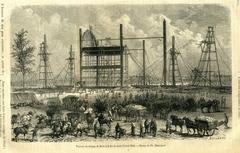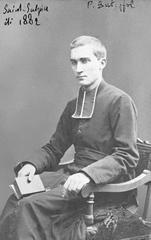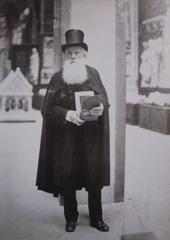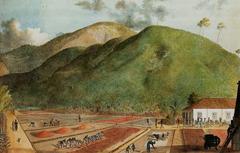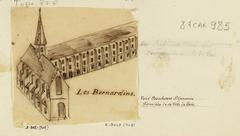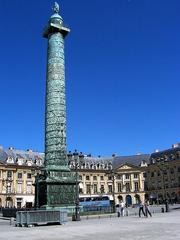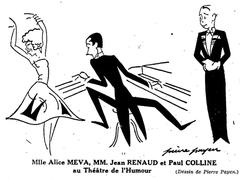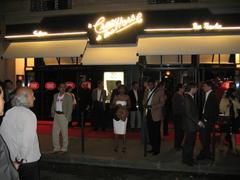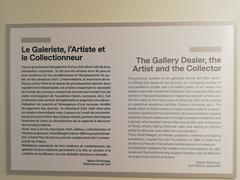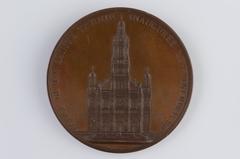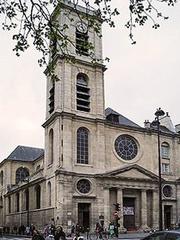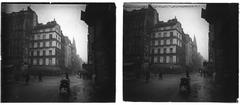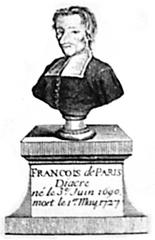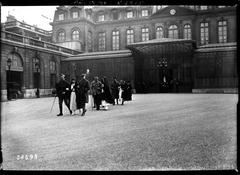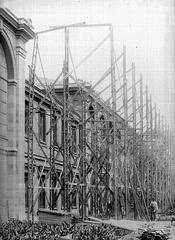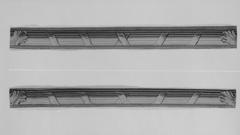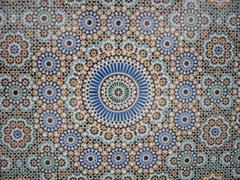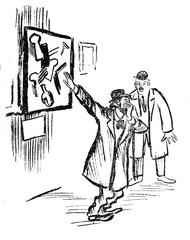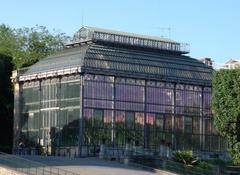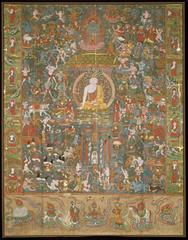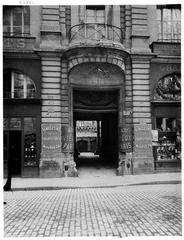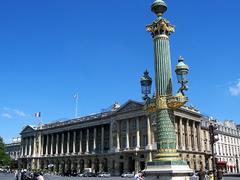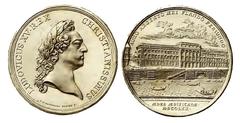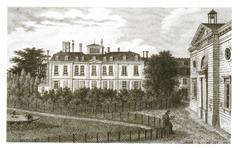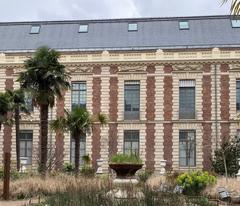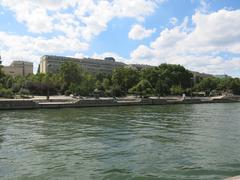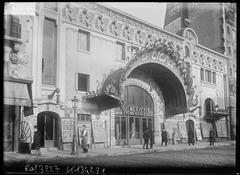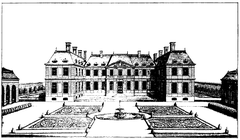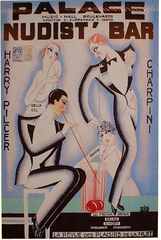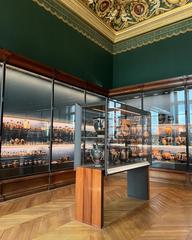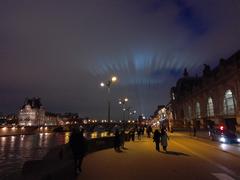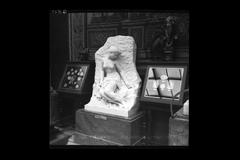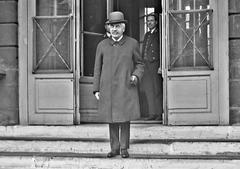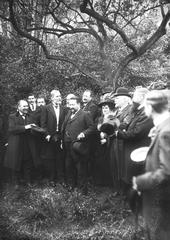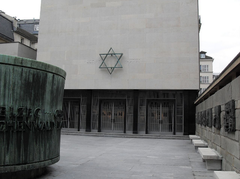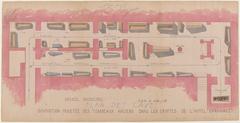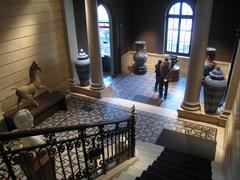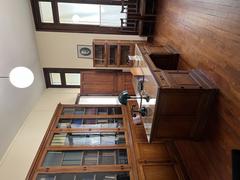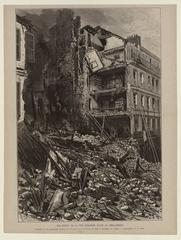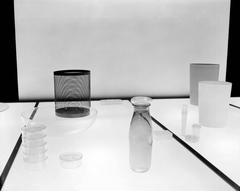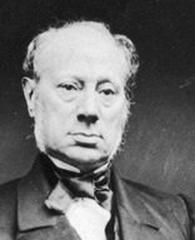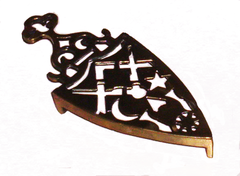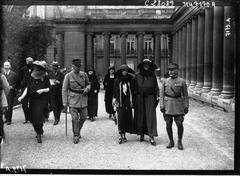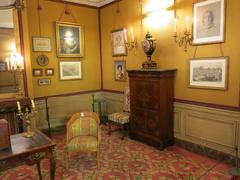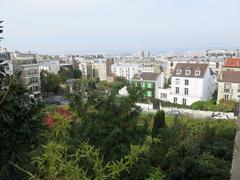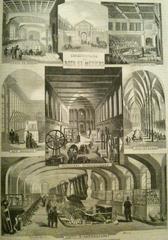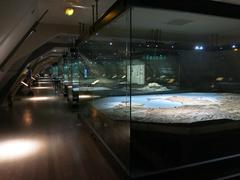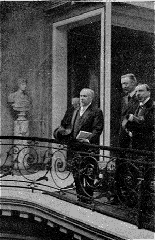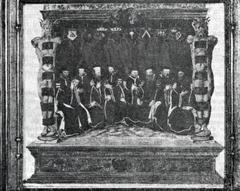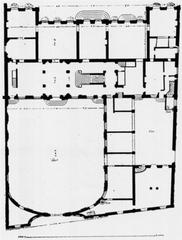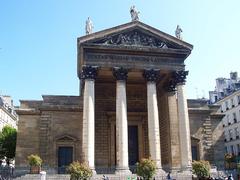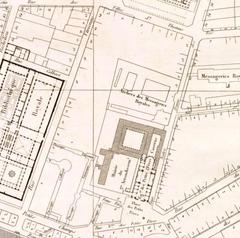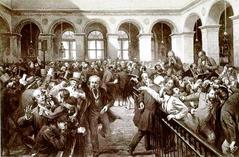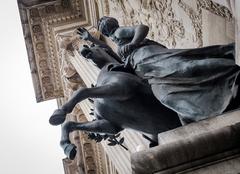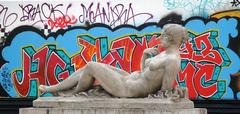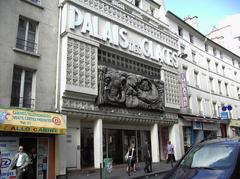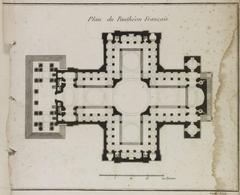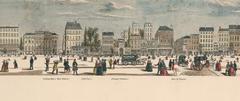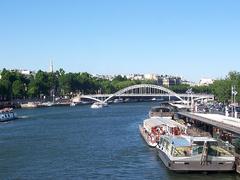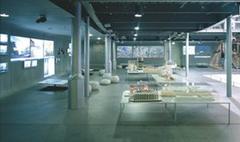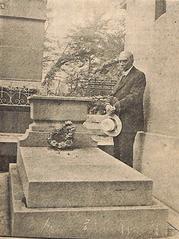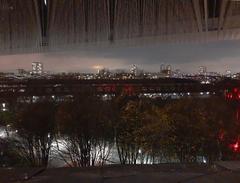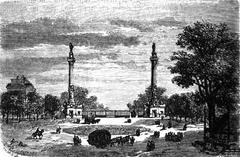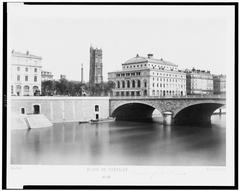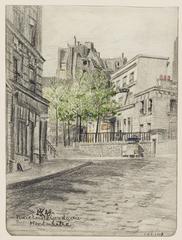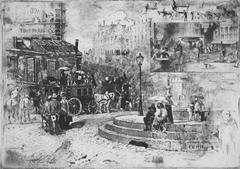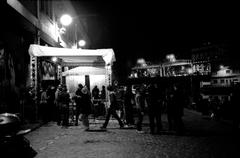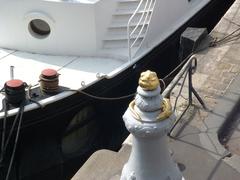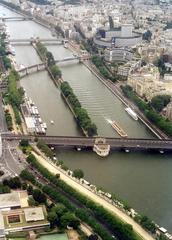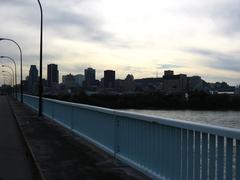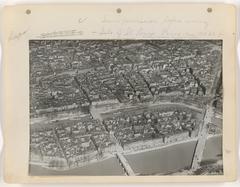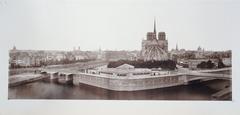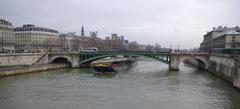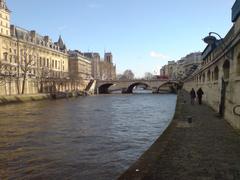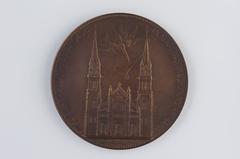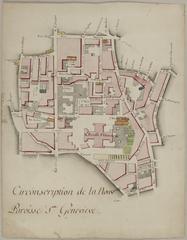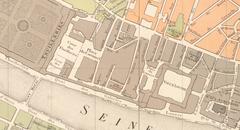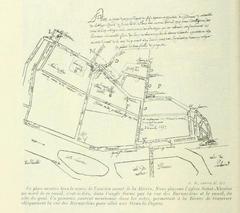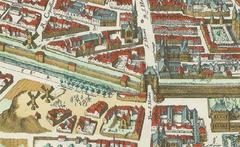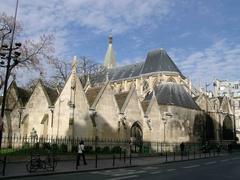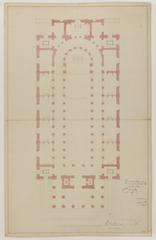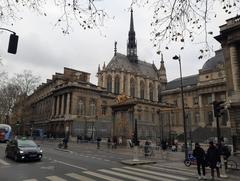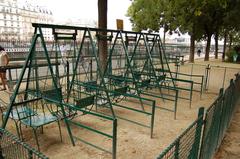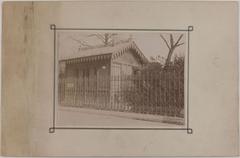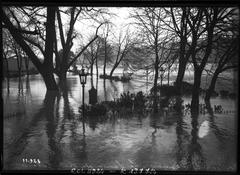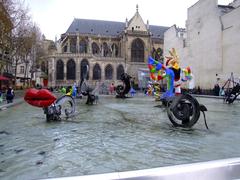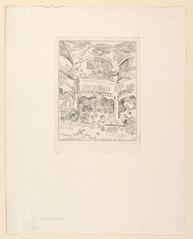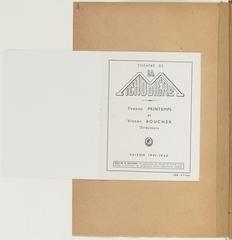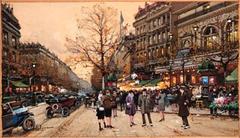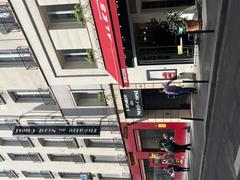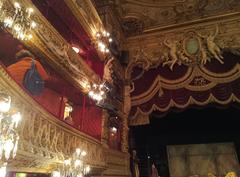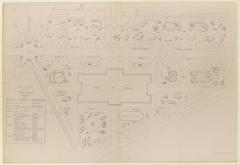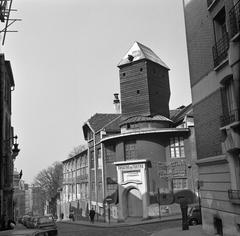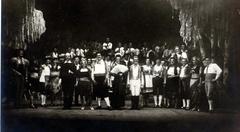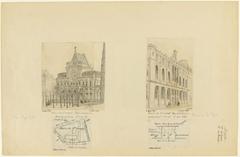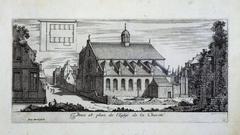
Visiting the Catacombs of Paris: Tickets, Hours, and Travel Tips
Published Date: 18/07/2024
Introduction: Discover the Fascinating World of the Catacombs
Beneath the bustling streets of Paris lies a hidden labyrinth that holds the remains of over six million people, offering a unique and somber glimpse into the city’s rich history. The Catacombs of Paris, known as ‘Les Catacombes de Paris,’ are a network of underground ossuaries that have fascinated and intrigued visitors for centuries. Originally ancient limestone quarries, these tunnels were repurposed in the late 18th century to address the urgent public health crisis caused by overcrowded cemeteries (Smithsonian Magazine). Today, the Catacombs serve not only as a historical monument but also as a poignant reminder of mortality, urban development, and the resilience of Parisian society. This comprehensive guide will delve into the history, significance, and visitor information for the Catacombs, ensuring you are well-prepared to explore this remarkable site.
Table of Contents
- Introduction
- History of the Catacombs
- Visitor Information
- Visitor Experience
- Educational and Research Opportunities
- Cultural Impact and Popularity
- Preservation and Conservation
- Travel Tips and Nearby Attractions
- FAQ
- Conclusion
- References and Further Reading
History of the Catacombs
Origins and Early Use
The Catacombs of Paris, known in French as “Les Catacombes de Paris,” have a history that dates back to the late 18th century. The catacombs were originally limestone quarries, which provided the building material for many of Paris’s most famous structures, including Notre-Dame Cathedral and the Louvre. The extensive network of tunnels and caverns beneath the city spans approximately 200 miles, though only a small portion is accessible to the public.
Transformation into Ossuary
By the late 18th century, Paris faced a significant public health crisis due to overcrowded cemeteries. The most notorious of these was the Cemetery of the Innocents, which had been in use for nearly a millennium. The cemetery’s conditions had deteriorated to the point where it posed a serious health hazard to the surrounding population. In 1780, a prolonged period of rain caused a wall around the cemetery to collapse, spilling decomposing bodies into the neighboring properties.
In response to this crisis, the city decided to transfer the remains from its cemeteries to the abandoned quarries. The process began in 1786 and continued until 1788. The bones were transported at night in a solemn procession of black-covered wagons, accompanied by priests chanting the service for the dead. The remains of an estimated six million people were eventually relocated to the catacombs.
Architectural and Artistic Development
The transformation of the quarries into a proper ossuary was overseen by Charles-Axel Guillaumot, the Inspector General of Quarries. Guillaumot and his successors organized the bones into a macabre yet orderly arrangement, creating walls of femurs and skulls interspersed with other bones. The catacombs were officially opened to the public in 1809, and they quickly became a curiosity for both Parisians and tourists (Atlas Obscura).
The catacombs also feature various inscriptions and carvings, some of which were added during the initial transfer of bones, while others were created later. These include poetic and philosophical musings on death, as well as more practical information about the origins of the bones and the history of the catacombs.
Modern History and Preservation
Throughout the 19th and 20th centuries, the catacombs continued to attract visitors, including notable figures such as Napoleon III and the future King Edward VII of England. However, the catacombs also faced challenges, including vandalism and unauthorized access. In response, the city implemented measures to protect and preserve the site, including restricting access to certain areas and increasing security.
In recent years, the catacombs have undergone further restoration and conservation efforts. These have included reinforcing the structural integrity of the tunnels, improving lighting and ventilation, and installing modern safety features. The catacombs are now managed by the Paris Musées, a public institution that oversees the city’s museums and heritage sites (Paris Musées).
Cultural Significance
The Catacombs of Paris hold a unique place in the city’s cultural and historical landscape. They serve as a stark reminder of the city’s past struggles with public health and urban planning, as well as its long history of quarrying and construction. The catacombs also reflect broader themes of mortality and the human condition, which have fascinated and inspired artists, writers, and thinkers for centuries.
The catacombs have been featured in numerous works of literature, film, and art. For example, Victor Hugo’s “Les Misérables” includes a dramatic scene set in the catacombs, while the 2014 horror film “As Above, So Below” uses the catacombs as a central location. The catacombs have also inspired various legends and myths, including tales of secret societies and hidden treasures.
Visitor Information
Tickets and Visiting Hours
The Catacombs of Paris are one of the city’s most popular tourist attractions, drawing hundreds of thousands of visitors each year. The public tour covers approximately 1.5 kilometers (about 1 mile) of the catacombs and takes around 45 minutes to complete. Visitors can explore the ossuary, view the various inscriptions and carvings, and learn about the history and significance of the site through informational panels and audio guides.
- Visiting Hours - The Catacombs are typically open Tuesday to Sunday, from 10:00 AM to 8:00 PM. They are closed on Mondays and certain holidays. It is recommended to check the official Paris Musées website for the most up-to-date information.
- Tickets - Tickets can be purchased online in advance to avoid long wait times. Prices vary, with discounts available for students, seniors, and children. Special guided tours are also available for an additional fee.
- Travel Tips - The entrance to the Catacombs is located at 1 Avenue du Colonel Henri Rol-Tanguy, 75014 Paris. It is easily accessible by metro, bus, or taxi. Be prepared for a subterranean experience by wearing comfortable shoes and bringing a light jacket, as the temperature inside the catacombs is consistently cool.
Accessibility and Guidelines
To ensure a safe and enjoyable visit, it is important to follow the guidelines and regulations set by the Paris Musées. These include restrictions on photography, the prohibition of large bags and backpacks, and the requirement to stay on the designated path. Visitors should also be prepared for the physical demands of the tour, which includes descending and ascending a total of 243 steps and navigating narrow, dimly lit passageways.
Nearby Attractions
While visiting the Catacombs, consider exploring other nearby attractions in the 14th arrondissement. These include the Montparnasse Tower, the Luxembourg Gardens, and the historic Montparnasse Cemetery.
Visitor Experience
Safety and Precautions
The Catacombs are a labyrinthine network, and it is easy to get disoriented. Visitors should stay with their group and follow the marked paths. The air quality is generally good, but those with respiratory issues should exercise caution. The Catacombs are also home to various species of bats and insects, although encounters are rare. It is advisable to carry a small flashlight, as some areas may be dimly lit (TripAdvisor).
Educational and Research Opportunities
Archaeological and Anthropological Studies
The Catacombs offer a unique opportunity for archaeological and anthropological research. The remains provide valuable insights into the health, diet, and lifestyles of Parisians from different historical periods. Researchers have studied the bones to understand the prevalence of diseases, nutritional deficiencies, and even the impact of historical events like the French Revolution. The Catacombs serve as a living laboratory for scientists and historians alike (National Geographic).
Historical Documentation
The Catacombs are also a treasure trove of historical documentation. Inscriptions and plaques within the tunnels provide information about the individuals whose remains are housed there, as well as the history of the Catacombs themselves. These inscriptions offer a glimpse into the social and cultural context of different eras, making the Catacombs an invaluable resource for historians and researchers (BBC).
Cultural Impact and Popularity
Influence on Art and Literature
The Catacombs have had a profound influence on art and literature. They have been featured in numerous works, from Victor Hugo’s “Les Misérables” to Edgar Allan Poe’s “The Cask of Amontillado.” The eerie and atmospheric setting of the Catacombs has inspired countless artists, writers, and filmmakers. They have also been the subject of various documentaries and horror films, further cementing their place in popular culture (The Guardian).
Tourism and Economic Impact
The Catacombs are one of Paris’s most popular tourist attractions, drawing over 500,000 visitors annually. This influx of tourists has a significant economic impact, contributing to the local economy through ticket sales, guided tours, and related services. The Catacombs also play a crucial role in promoting cultural tourism, attracting visitors interested in history, architecture, and the macabre (Forbes).
Preservation and Conservation
Ongoing Efforts
Preserving the Catacombs is a complex and ongoing task. The tunnels are subject to natural wear and tear, as well as the impact of millions of visitors. Conservation efforts include regular inspections, structural reinforcements, and climate control measures to prevent the deterioration of the bones and the surrounding limestone. The city of Paris works closely with conservation experts to ensure the long-term preservation of this historical site (Paris Musées).
Challenges and Future Plans
One of the main challenges in preserving the Catacombs is balancing public access with conservation needs. The high foot traffic can accelerate the wear and tear of the site, necessitating periodic closures for maintenance. Future plans include the development of virtual tours and augmented reality experiences to provide alternative ways for people to explore the Catacombs without physically entering them. These initiatives aim to reduce the environmental impact while enhancing the educational and cultural value of the Catacombs (Le Monde).
Travel Tips and Nearby Attractions
Travel Tips
Visitors are advised to plan their visit in advance and arrive early to avoid long lines. It’s also beneficial to read up on the history of the Catacombs to fully appreciate the experience. Carrying a small flashlight and wearing comfortable clothing is recommended due to the dim lighting and cool temperature underground.
Nearby Attractions
While visiting the Catacombs, consider exploring nearby attractions such as the Luxembourg Gardens, the Montparnasse Tower, and the vibrant Latin Quarter. These sites offer a diverse range of experiences, from serene gardens to panoramic city views and lively cultural scenes.
FAQ Section
How long is the tour of the Catacombs of Paris?
The tour of the Catacombs of Paris covers approximately 1.5 kilometers and lasts about 45 minutes to an hour.
Is it safe to visit the Catacombs of Paris?
Yes, it is generally safe to visit the Catacombs. However, visitors should follow safety guidelines, stay with their group, and be cautious of the narrow and uneven pathways.
Conclusion
The Catacombs of Paris are a site of immense historical, cultural, and scientific significance. They offer a unique glimpse into the past, serving as a reminder of the city’s history and the universal themes of life and death. For visitors, the Catacombs provide an unforgettable experience, blending history, art, and a touch of the macabre. Don’t forget to book your tickets in advance, explore nearby attractions, and immerse yourself in the rich history of Paris.
For more information and updates, follow us on social media and check out our other related posts.
References and Further Reading
- Smithsonian Magazine, 2014, Michael Paterniti https://www.smithsonianmag.com/travel/paris-catacombs-180950160/
- Atlas Obscura, 2020, Eric Grundhauser https://www.atlasobscura.com/places/paris-catacombs
- Paris Musées, 2023, Paris Musées https://www.parismusees.paris.fr/en/catacombs
